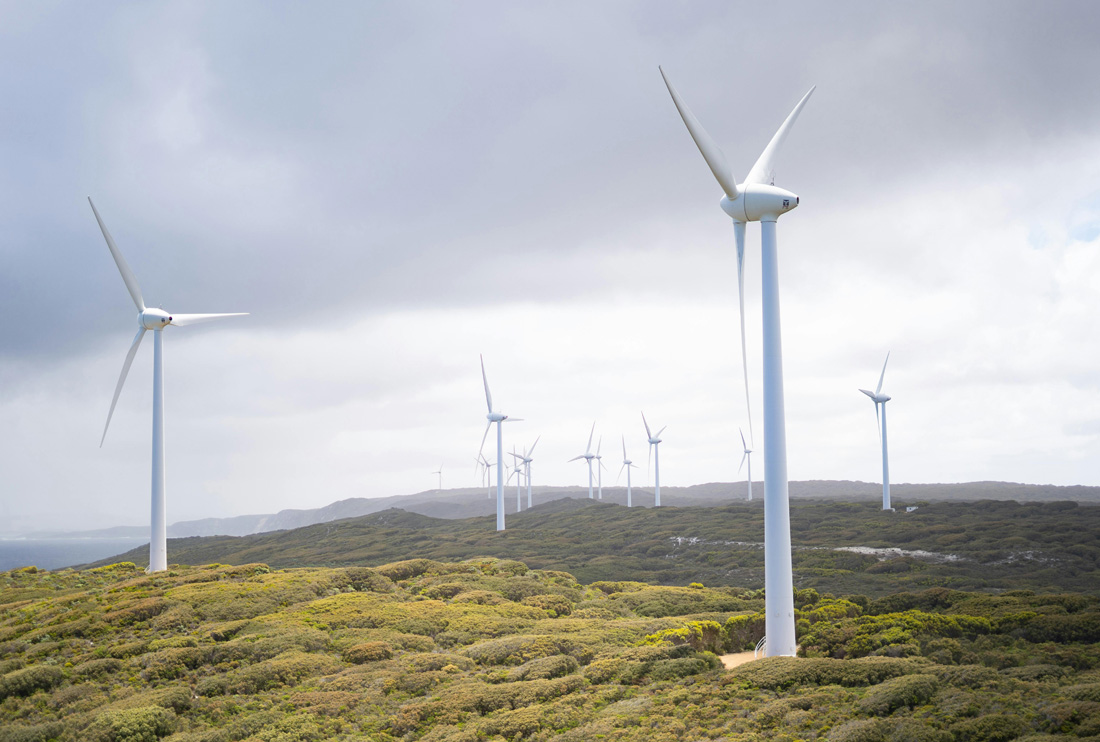
Historically, the growth outlook of alternative energy companies has been directly related to the state of the economy and inversely related to the prices of petroleum products. While that relationship remains in place, other macroeconomic uncertainties are weighing on the sector's fortunes.
The recent trend of lower stock prices, higher spreads on investment-grade corporate bonds, a stronger dollar and increasing financial strains in the Eurozone are contributing to a less-robust picture going forward. The bleak picture in U.S. has been offset only through increases in home prices and falling energy prices.
Of the macroeconomic uncertainties, the most significant is the recent re-intensification of a Eurozone debt crisis, which has the potential to drag the global economy into another recession. The region's problems are contributing to a flight toward dollar-denominated assets that is resulting in a stronger dollar, lower yields on term Treasury securities, and declines in major European equity indices. The yield on the 10-year Treasury Note is hovering around all-time lows of around 1.5%. This has resulted in widening the spread between corporate bonds versus the treasury.
Going forward, as the Fed continue to sell shorter-dated assets and uses the proceeds to buy longer-dated securities, effectively removing duration from the market, longer-dated yields will be kept lower than would otherwise be the case. As a result, we expect the 10-year Treasury note yield to hover around 2.0% in fiscal 2012, reflecting both persistent flight-to-quality effects and the impact of Operation Twist.
Overall, the outlook for the U.S. economy appears to have lost momentum, with a host of variables showing weakness in the last few months. The Fed's extension of Operation Twist and downgrading of its growth outlook are reflections of this emerging unfavorable trend. That said, the expectation is that the U.S. economy will continue to expand a moderate pace, which given all problems in Europe and questions about China, has be considered a favorable outlook.
Another direct fallout of the Eurozone crisis is weakness in global oil demand leading to oil prices going down. However, the blame for the southward oil prices also falls on Saudi Arabia increasing production. To add to the woe, high U.S. crude stocks and worries about China's growth outlook have been weighing on investor sentiment, weakening oil prices to a ten-month low. Partly offsetting this unfavorable view has been a tightening global supply picture in view of the geopolitical fallout over Iran's alleged nuclear ambitions and strong demand from developing countries.
With a muddled home front, the question now lies largely upon the slowdown in China and the recession in Europe and the effect it will have on the U.S. growth momentum.
The apparent 'decoupling' between not-so-bad U.S. prospects and a sub-par outlook abroad has nevertheless a bearing on the alternative energy sector, primarily because of restricted government spending levels. This reduced demand environment due to overburdened government finances has come at a particularly inopportune time for alternative energy operators due to the sector's supply glut.
The gradually emerging solar photovoltaic (PV) industry fortunes are currently on tenterhooks. On the one hand, the core European markets of Germany, Italy and Spain historically accounting for the lion's share of solar products are fast nearing maturity. To counter this tepid growth, the companies are increasingly focusing on the Chinese, Indian and U.S. markets.
However, as things currently stand, with supply growth far outstripping demand growth, and firms without deep pockets may not be able to sustain over the longer run. The pain is made acute by the steady ramping of low-cost China based players grabbing market share from the U.S. and European contenders who have a higher cost structure.
On the other hand, China's new solar power tariff regime is clear pointers for investors to look beyond the near-term earnings horizon for healthier performance. The U.S. Energy Department in its monthly Short-Term Energy Outlook for June lowered its outlook for oil prices in the second half of the year from what they projected the month before. Consequently, we believe that the oil price downside will only drag downward the emerging positive alternative energy narrative.
A worldwide industry association for the solar photovoltaic electricity market, the European Photovoltaic Industry Association (EPIA), forecasts that the power generated from solar modules in Europe could be competitive in relation to conventional forms of energy by the end of the current decade. The major solar markets under survey were Germany, Italy, France, Spain and Britain.
A number of traditional utility companies have growing alternative energy operations. But the fortunes of some of these companies, particularly those with significant fossil-fuel exposures, are less attractive than their peers.
In the utilities space, we are less optimistic about the prospects of TransAlta Corporation, UNS Energy Corporation, UIL Holdings Corporation, Portland General Electric Company and ITC Holdings Corporation.
Conversely, favorable rate cases and stable sales growth in their respective service areas make companies like National Grid plc, Unitil Corporation, Atlantic Power Corporation, Duke Energy Corporation and NiSource Inc. more attractive.
A major growth area in this space is solar energy. The U.S. has a lot of catching up to do, despite enormous potential, to get anywhere close to the global leaders. Solar Energy Industries Association (SEIA) is the U.S. trade association of approximately 1,100 companies in the solar energy industry. Per SEIA, in fiscal 2011, the U.S. solar energy industry grew 109% year over year to reach 1,868 MW, which represents 7% of all PV globally, up from 887 MW and 5% of global installations in 2010.
According to the SEIA, this unprecedented growth was spurred in part by declining installed solar photovoltaic (PV) system prices, which fell 20% in fiscal 2011 on the back of lower component costs, improved installation efficiency, expanded financing options, and a shift toward larger systems nationwide. Per the SEIA, the U.S. solar bullishness continued in the first quarter, with new installations of 506 MW of PV, up 85% year over year.
As for wind energy, per the American Wind Energy Association (AWEA), the U.S. had a total of 48,611 MW of installed wind power at the end of the first quarter of 2012. The agency is confident that future growth would be vibrant riding on friendly legislations, concern about global warming, green consumer movement and rising demand for traditional sources.
According to the EPIA, the cumulative global installed PV capacity stood at almost 67.4 GW at the end of 2011, compared to only 39.7 GW at the end of 2010. The agency reports that almost 21 GW of this growth occurred in Europe. In fiscal 2011 the two biggest markets, Italy and Germany, accounted for nearly 60% of global market growth.
The number of markets reaching more than 1 GW of additional capacity during fiscal 2011 rose from 3 to 6. In 2010 the top 3 markets were Germany, Italy and the Czech Republic; in 2011 Italy led, followed by Germany, China, the U.S., France and Japan, each with over 1 GW of new capacity.
Here we take a look at the alternative energy space and attempt to identify this nascent industry's strengths and weaknesses.
Opportunities
Environmental advantage: Solar power is the most benign electricity resource. Solar cells generate electricity without air or water emissions, noise, vibration, habitat impact or waste generation. Over time, rapid population growth, depletion of non-renewable conventional sources, and escalating pollution levels will help shape a much more pronounced global focus on renewable projects.
The long-term bullishness is shared even by oil goliaths like Royal Dutch Shell plc and BP plc who expect that by fiscal 2050, one-third of the global energy needs will come from renewable sources.
In this space we are bullish on waste management service provider, Covanta Holding Corp., which has tied the majority of its service contracts under long-term agreements with inflation escalators.
Fuel risk advantage: Unlike fossil and nuclear fuels, alternative energy has no risk of fuel price volatility or delivery risk. Although there is variability in the amount and timing of sunlight in the day, season and year, a properly sized and configured system can be designed to ensure high reliability while providing a long-term, fixed-price electricity supply. In this context the one name we are bullish about is Ormat Technologies Inc., which engages in the geothermal and recovered energy power business.
In light of the Fukushima Daichi episode in Japan, the global focus has tilted towards solar in a big way. Germany plans to phase out nuclear power plants by 2022. This move will definitely boost solar fortunes in one of its largest global markets.
Location advantage: Unlike other renewable resources such as hydroelectricity and wind power, solar power is generally located at a customer's site due to the universal availability of sunlight. As a result, solar power limits the expense and losses associated with transmission and distribution from large-scale electric plants to the end-users. For most residential consumers seeking an environment-friendly power alternative, solar power is currently the only viable choice.
Environmental legislation: Alternative energy companies are increasingly benefiting from new legislation in the U.S. stipulating installation of renewable sources of electricity generation as mandated by Renewal Energy Standards (RES). As of now there are 29 states and the District of Columbia in the U.S. that have RES legislation in place. Another eight states also have nonbinding goals for adoption of renewable energy sources.
At the federal level, Congress has extended the 30% federal investment tax credit (ITC) to both residential and commercial solar installations until December 31, 2016. Also, under the American Reinvestment and Recovery Act (ARRA), the U.S. Treasury Department earlier implemented a program to issue cash grants in lieu of investment tax credit for renewable energy projects.
The wind sector has also benefited significantly from the production tax credit (PTC) over the last few years. It was started in 1992 as a part of the Energy Policy Act of 1992. Subsequent to that it has received life extension of half a dozen times. In the first decade of a renewable energy facility's lifespan the PTC provides a $0.022/ kilowatt-hour investment tax credit benefit. Our favorites in this space is Juhl Wind Inc.
Subsidy programs: Governments, most notably in China, Japan, Canada, U.K., Australia, India and the Middle East, have increased their financial support for solar projects. In China, governmental authorities recently adopted a national feed-in tariff (FiT) policy for large scale alternative energy projects. China also expanded the Golden Sun Program, an upfront cost subsidy program, aimed primarily at distributed generation.
In addition, according to the current draft of the 12th 5-year plan for solar energy, the government intends to raise the 2015 goal for total cumulative solar energy capacity to 15 GW and 50 GW by 2020. Owing to its Chinese focus we are keeping a close watch on Sino Clean Energy Inc., which operates as a third party commercial producer and distributor of coal-water slurry fuel.
In Europe, the European Union's goal of a 20% share of renewable sources in the energy basket by 2020 will keep the flow of new projects going. Specific solar energy stocks under our coverage that stand to benefit from this environment include Ascent Solar Technologies Inc., bearing a Zacks #2 Rank (short-term Buy rating).
In Australia, the solar industry is driven by several regulatory initiatives that support the installation of solar PV modules in both rooftop and free-field applications, including the federal government's nationwide Renewable Energy Target, which has set a renewable energy goal for Australia of 20% by 2020. Clean Energy Finance Corporation and Australian Renewable Energy Agency, both established in 2011, will begin implementation in 2012. In India, the National Solar Mission includes a goal of installing 22 GW of solar power by 2022.
In the Middle East and Africa, several countries have announced sizeable solar targets, although policy mechanisms are not yet firmly established. In the Kingdom of Saudi Arabia, a solar policy with targets and incentives is expected in 2012. The size of the program is expected to be tens of gigawatts of solar by 2030, or as early as 2020.
In the United Arab Emirates, Abu Dhabi has set a target of sourcing 7% of electricity supply from renewables by 2020. In January 2012, Dubai announced plans for a 1 GW solar farm by 2030. In Morocco, the government has set a 2 GW solar goal by 2020. Other markets such as Algeria, Egypt, Jordan, Kuwait, Oman, Qatar and Tunisia are also actively promoting solar and issuing tenders.
Fortunes tied to crude: Alternative energy stock prices generally rise and fall in direct proportion to the price of crude oil. While in times of high oil prices this may present an opportunity, it also increases volatility in the sector. Per EIA, world crude consumption grew by more than 1 million barrels per day (bpd) in 2011 to a record-high level of 88.1 million bpd from 87.1 million bpd in 2010.
However, currently energy prices have continued to fall over the past few weeks. The U.S. average weekly price of all grades of gasoline, already down from a high of approximately $4 per gallon in early April, has fallen to around $3.40 per gallon. Steady declines in energy price futures suggest that these declines are not likely to be reversed in the near-term.
We feel that there is a very small pass-through from sharp changes in energy prices to core inflation. Based on this assumption we feel that the latest slew of energy price declines could also help to slow core inflation.
Questions about China's growth outlook remain a key source of uncertainty in demand projections for oil. On the supply side, growing hostilities in the Persian Gulf region due to Iran's nuclear program remains a key risk factor for the global oil complex.
The Iranian threat has been a major contributor to the volatility in oil prices, a trend that is unlikely to abate any time soon. Per EIA estimates Iran's crude oil production would fall by 850,000 barrel per day (bpd) by the end of 2012 because of a lack of investment, reducing its output to 2.7 million bpd from 3.55 million bpd at the end of fiscal 2011.
Based on such assumptions, the Organization of the Petroleum Exporting Countries (OPEC)—which supplies around 40% of the world's crude—predicts that global oil demand would increase to 88.7 million barrels a day in 2012. Treading the same bath another major energy consultative body, the Paris-based International Energy Agency (IEA), the energy-monitoring body of 28 industrialized countries, said that it expects world oil consumption to grow in 2012 to 90.0 million barrels per day.
Weaknesses
Excess capacity: In the near term, the solar industry is facing the problem of excess solar cell and module capacity. Going by the trend of solar companies citing sluggish demand and high inventory levels, affecting margins, virtually the whole industry is in a pause. The earlier rush in vertical integration by individual players for self-reliance in their solar wafer/cell needs, has created a lot of unutilized capacity for the industry.
The near-term industry outlook is thus clouded by unnecessary inventory arising from a supply glut and a corresponding underutilization of capacity. This has led to industry-wide sharply falling Average Selling Prices. Solar players like LDK Solar Co. Ltd., STR Holdings Inc. and JinkoSolar Holding Co. Ltd. are in for a difficult future in the near term.
Recent start-ups: A large number of these companies are recent start-ups with limited resources. As such, quite a few depend on their customers' ability to finance solar projects and are exposed to continuing near-term losses due to start-up costs. Companies such as Trina Solar Ltd. and Yingli Green Energy Holding Co. Ltd. come under this category.
Subsidy roll-back: Budgetary constraints have caused prime global solar markets like Germany, Italy, Australia, U.K. and Taiwan to roll back a portion of their grants. Earlier, sales of solar players from the above countries witnessed a sharp rise mainly fueled by the rush to complete projects ahead of subsidy roll-backs.
A struggling U.S. labor market underlies the high levels of high unemployment expected to persist throughout the forecast horizon, moderating core inflation. After eight months of a steadily declining unemployment rate, May saw the first uptick in the unemployment rate since June of last year. Along with recent weakness in other labor market data, this leads us to revise our forecast of the unemployment rate by two-tenths to 7.8% at the end of 2013.
Going forward, we expect to see a paradigm shift from a market hoisted by growing governmental/institutional support to one of stable growth. This may affect companies such as First Solar Inc. and SunPower Corporation, which generate a substantial portion of sales from markets like Germany.
One of the prime solar markets, Germany is consistently evaluating changes to the German Renewable Energy Law, or the EEG, and recently approved significant and accelerated feed-in tariffs (FiTs) reductions for projects up to 10 MW and an elimination of FiTs for projects over 10 MW.
These FiT changes would particularly impact the competitiveness in Germany of large-scale free field PV systems and modules to be installed in such systems. These policy changes wrought by the German Environment and Economy Ministers and approved by the German Parliament will negatively affect long-term demand and price levels for PV products in Germany.
Also, the 30% grant in lieu of the federal investment tax credit under the ARRA expired on December 31, 2011 and, unless extended, will not be available for solar installations that begin construction on or after January 1, 2012. If the program is not extended, total tax equity availability could be reduced which may adversely affect the ability to arrange financing for utility-scale projects and may adversely affect the attractiveness of the U.S. solar market.
Finally, the production tax credit (PTC) is slated to be cancelled at the fag end of fiscal 2012, if it is not renewed alternative energy installations in the U.S. may take a backseat.
New emerging technologies: The alternative energy industry remains an emerging sector with a consistent focus on the lowest-cost technology and cost-competitiveness using traditional means of electricity generation. This may prove disastrous for existing companies ruling the solar roost should a cheaper alternative emerge.
In this area we are keeping close watch on companies like Ocean Power Technologies Inc. Ocean Power Technologies, Inc. engages in the development and commercialization of proprietary systems that generate electricity by harnessing the renewable energy of ocean waves.



































